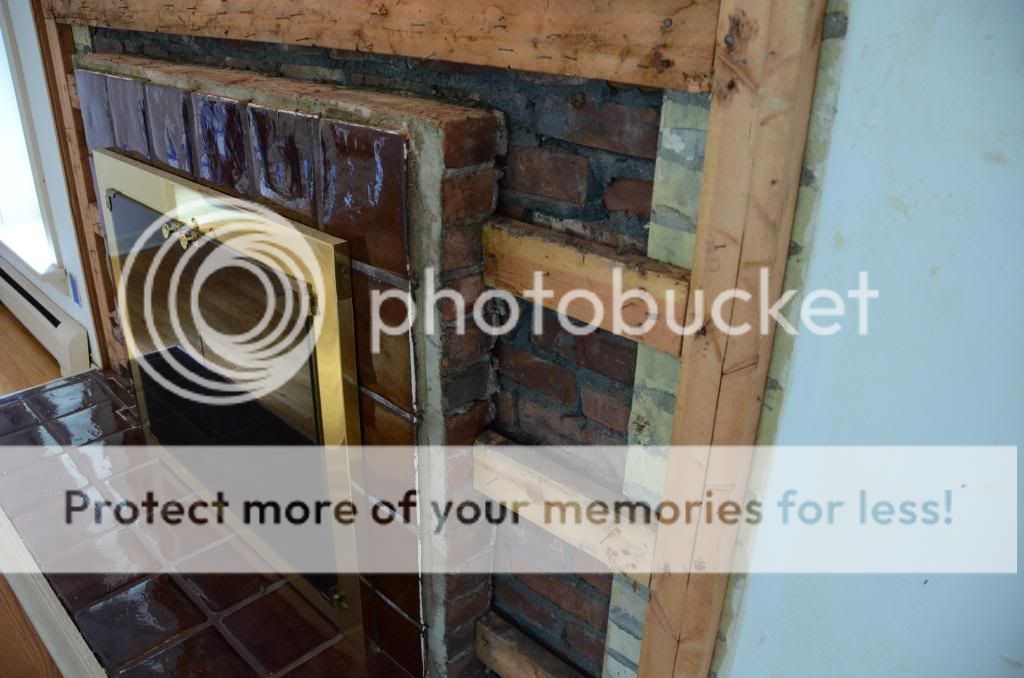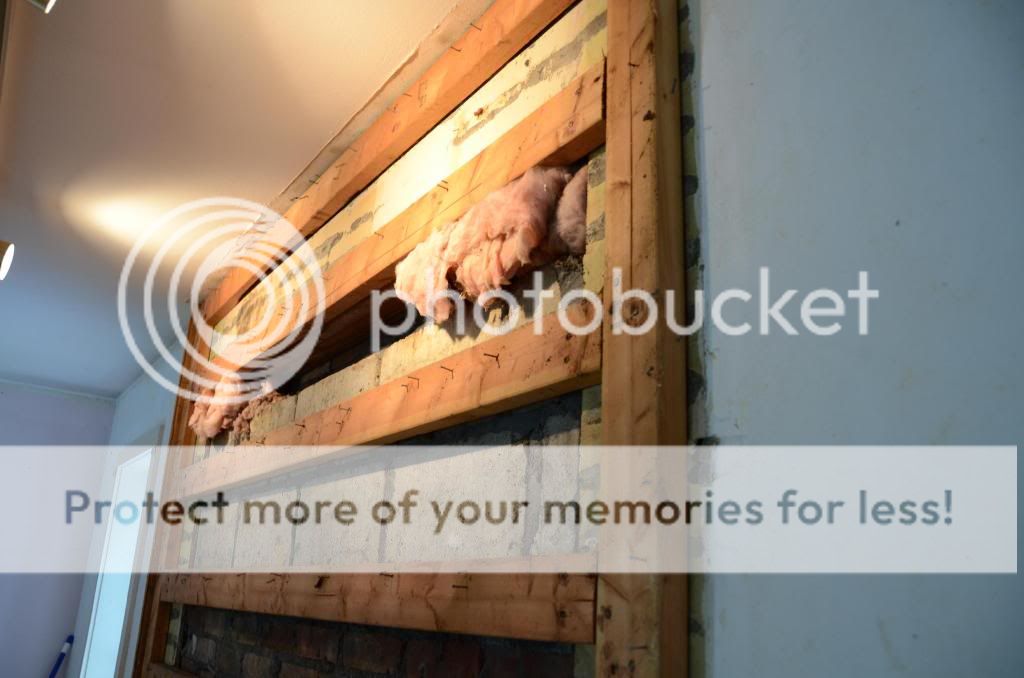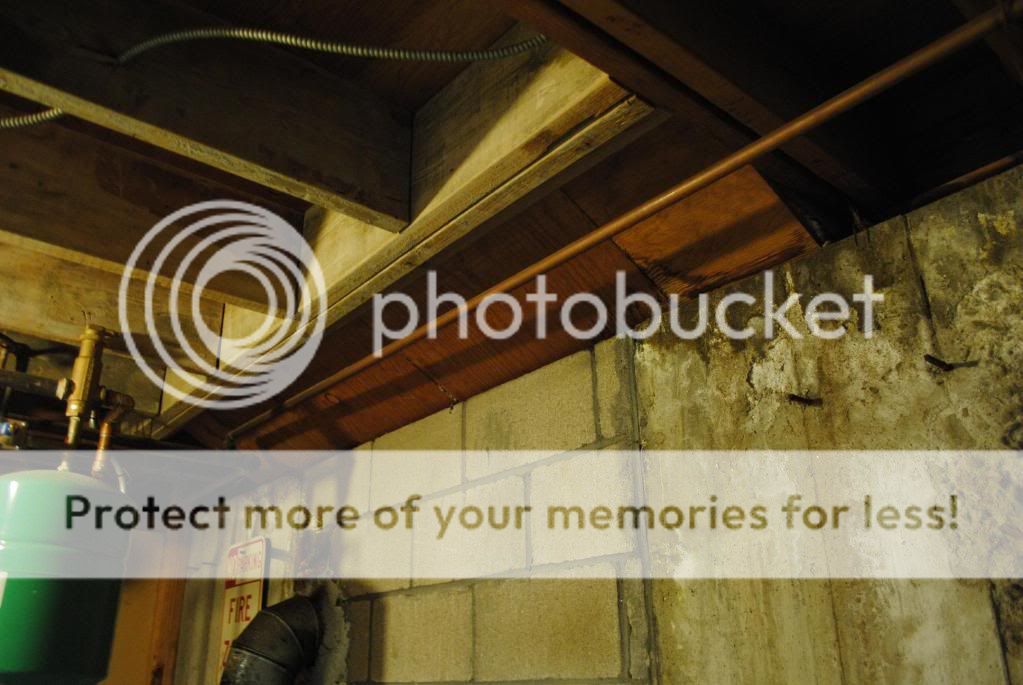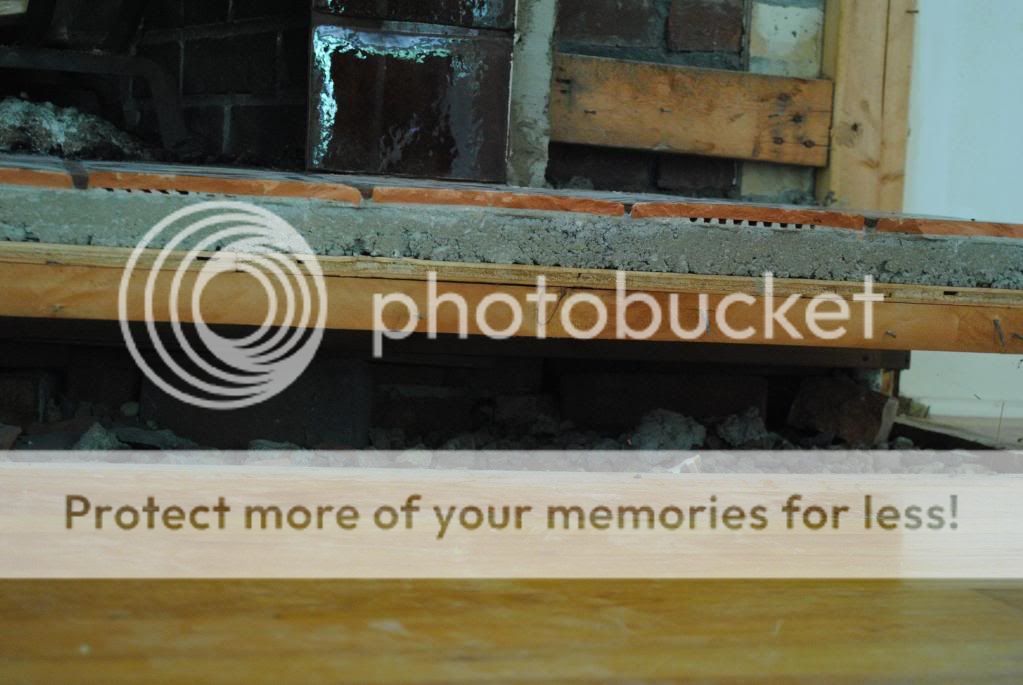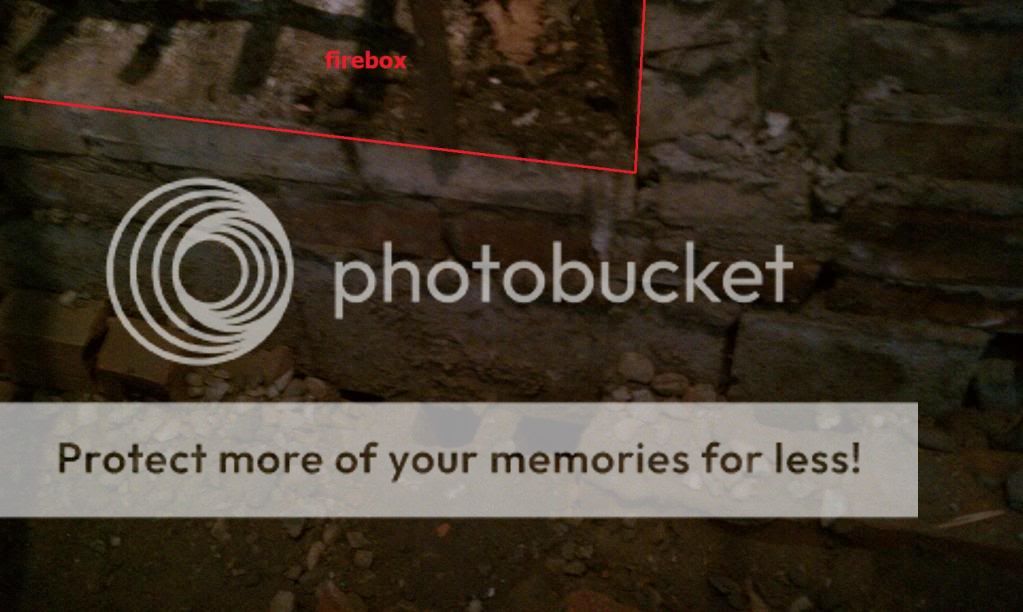I posted something similar in the DIY and General forum, was told I would get more advise here, so here it is.
We recently bought our first house and currently doing a lot of renovating before we move in, one of the projects being the fireplace. We are planning on re-facing the fireplace with veneer stone, probably cultured stone, and possibly in the future buying a wood burning insert (quadra-fire 2700 or 3100). We are also going to be hanging a TV on the chimney above the mantel. When we bought the house, it had white painted pine boards on top of the pictured 2x4 frame nailed to the brick, VERY ugly. I ripped that out and here is what it currently looks like:
The wood/tiled hearth, tile surround, and gold trim will be getting ripped out soon.

And here is what we are hoping to end up with after we are done:

So here is where we need your help, what is the best approach to turn our fireplace from picture #1 to picture #2?
I was thinking two approaches:
#1: Build a wood frame, similar to what is already there, screw metal lathe over the 2x4, then mortar and veneer stone over that. For the hearth I was thinking once again build a wooden rectangle box, metal lathe, mortar and veneer stone, then bluestone slab on top.
OR
#2: Lay another layer of brick on top of the existing layer to make it even with the extra layer around the fireplace opening, then mortar/veneer stone. For the hearth, 3 or so layers of brick stacked/mortared, then bluestone on top of that.
But I have concerns for both. #1, is a wooden frame against building code? I have heard both yes and no. For #2, I'm concerned about the weight of so much more brick.
Thanks for any advice you can give us! Much appreciated
We recently bought our first house and currently doing a lot of renovating before we move in, one of the projects being the fireplace. We are planning on re-facing the fireplace with veneer stone, probably cultured stone, and possibly in the future buying a wood burning insert (quadra-fire 2700 or 3100). We are also going to be hanging a TV on the chimney above the mantel. When we bought the house, it had white painted pine boards on top of the pictured 2x4 frame nailed to the brick, VERY ugly. I ripped that out and here is what it currently looks like:
The wood/tiled hearth, tile surround, and gold trim will be getting ripped out soon.
And here is what we are hoping to end up with after we are done:
So here is where we need your help, what is the best approach to turn our fireplace from picture #1 to picture #2?
I was thinking two approaches:
#1: Build a wood frame, similar to what is already there, screw metal lathe over the 2x4, then mortar and veneer stone over that. For the hearth I was thinking once again build a wooden rectangle box, metal lathe, mortar and veneer stone, then bluestone slab on top.
OR
#2: Lay another layer of brick on top of the existing layer to make it even with the extra layer around the fireplace opening, then mortar/veneer stone. For the hearth, 3 or so layers of brick stacked/mortared, then bluestone on top of that.
But I have concerns for both. #1, is a wooden frame against building code? I have heard both yes and no. For #2, I'm concerned about the weight of so much more brick.
Thanks for any advice you can give us! Much appreciated


